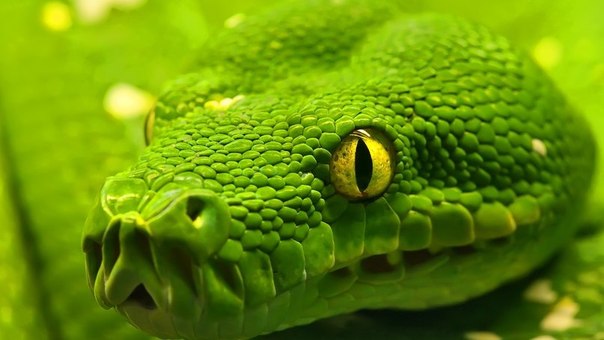How to distinguish a Green python from a Dog-headed boa constrictor
Many people often confuse these two species, considering them to be extremely similar, however, if you look closely, you will notice that these are completely different snakes. We will not touch upon the anatomical differences between boas and pythons, but we will designate only some of the most pronounced EXTERNAL signs: 1) The shape and size of the head. The boa constrictor's head is much more massive than that of the python, the muzzle is more elongated, the rear part is wide and voluminous, in contrast to the compact head of the chondrue. 2) Thermal radars. The boa constrictor's head is replete with thermal detectors, they are located both under the lower lip and above the entire upper lip. Chondrules have well-distinguishable thermal pits only under the lower lip. 3) Scaling of the head. Pay attention to the size of the scutes / scales on the front of the head - in the boa constrictor they are large and differ in size from the rest of the scales. Chondrules have small scales that do not differ from the rest. 4) Figure. In most (not all !!!) dog-headed boas, the pattern along the back is made up of transverse white serifs, darkened along the edges. I don’t presume to say that this is an iron argument, but I have never seen a green python with such a pattern. I hope this manual will help you understand the difference between these two types)
Thermal radars above the upper lip, large shields on the "nose" - Dog-headed boa constrictor
Small scales on the "nose", thermo holes only on the lower lip - Green python
Well-defined white transverse markings - Corallus caninus
Almost complete absence of a picture (but in this case it is not an indicator) - Morelia viridis
The elongated massive head, the wide back of the head - a dog!
Small head, unstretched nose, narrow nape - chondrue






Comentarios
Publicar un comentario